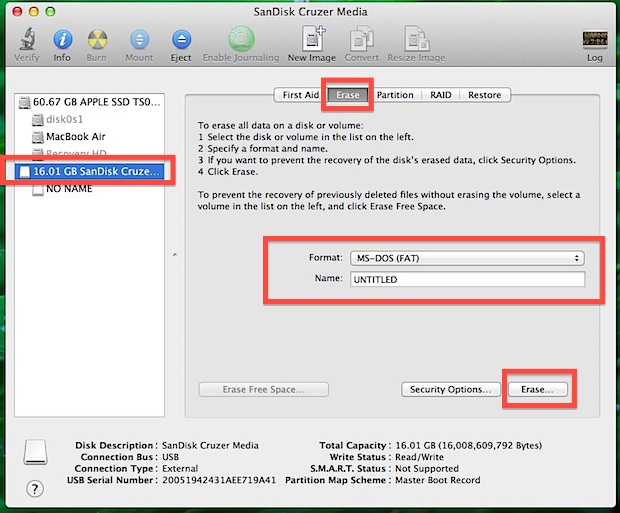
This will differ depending on which distro you are trying to install. Some distros also let you try out the OS before installing it here. Warning: Changing BIOS settings can damage your computer if you don’t know what you’re doing. If your computer reboots Windows, there was either an issue with your drive, or you might have to change settings in your BIOS. If you don’t see your drive, choose EFI USB Device, then pick your drive from the next screen. This will take you into the Windows Recovery Environment. Then hold down the SHIFT key while clicking Restart.This is the button in the lower-left corner of your screen that looks like the Windows logo.
MAC PREPARE A USB DRIVE FOR LINUX INSTALL HOW TO
Now that you have your Linux distro on a USB, here’s how to Warning: This will erase all the data on your drive, so make sure to back up any important files. Might take some time, so be patient if the progress bar gets stuck. Then wait for Rufus to mount your ISO file onto your drive. If you get a pop-up message asking you to select a mode that you want to use to write the image, choose ISO. Under Boot Selection, click the Select button and choose the ISO file you downloaded earlier.

If you don’t know which drive to use, eject all other drives until you only have one to choose from. Open Rufus and select your USB drive from the Device list.You can find the latest version of the application here. This will erase all the data stored on your drive, so make sure to back up your files before you begin. Insert the USB drive into your computer.They are free to download from each distribution’s main website. Some of the top options are Ubuntu, Mint, or Fedora. Download a Linux distro in ISO format.Here’s how to do that: How to Make a Linux Bootable USB
MAC PREPARE A USB DRIVE FOR LINUX INSTALL INSTALL
Once you have a designated space to install Linux, you’ll need to write a Linux Distro onto a USB thumb drive or external drive 4GB or larger. It is recommended that you set aside at least 20GB (20,000MB) for Linux.



 0 kommentar(er)
0 kommentar(er)
